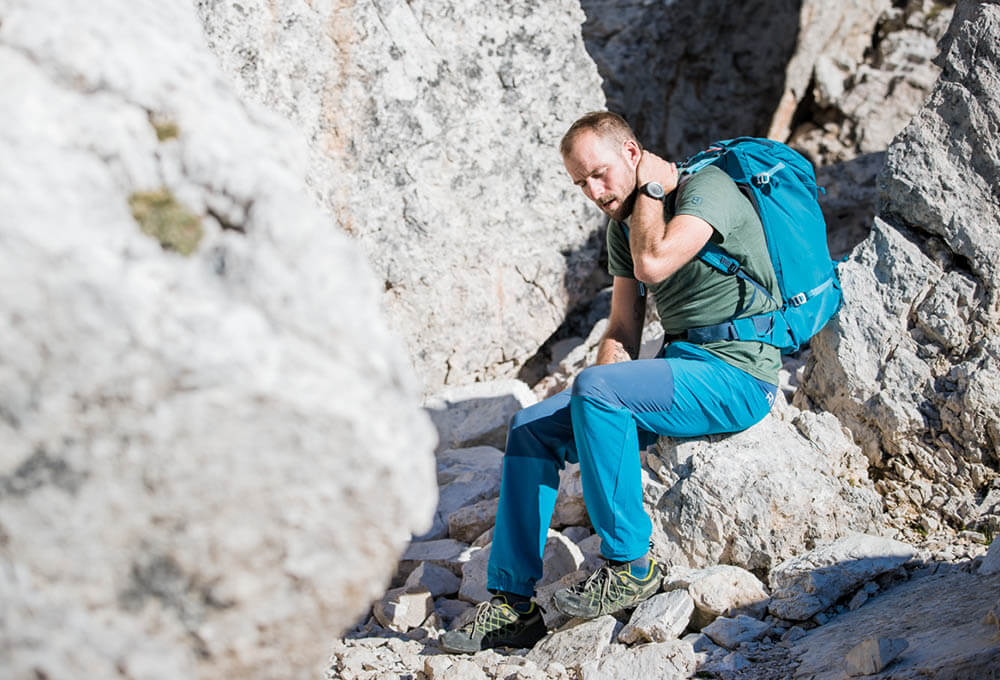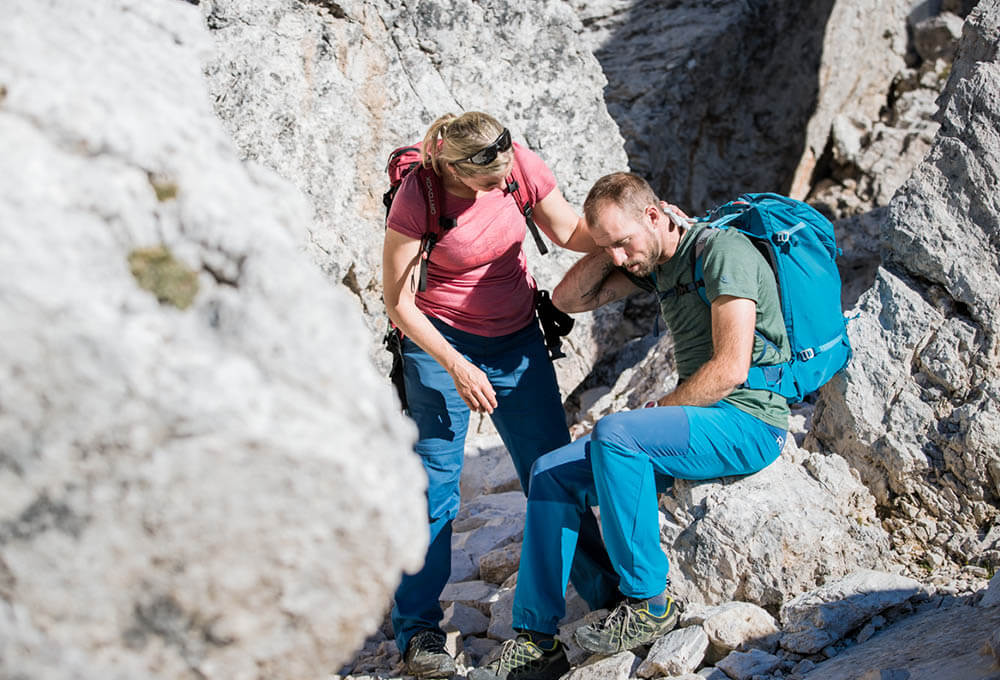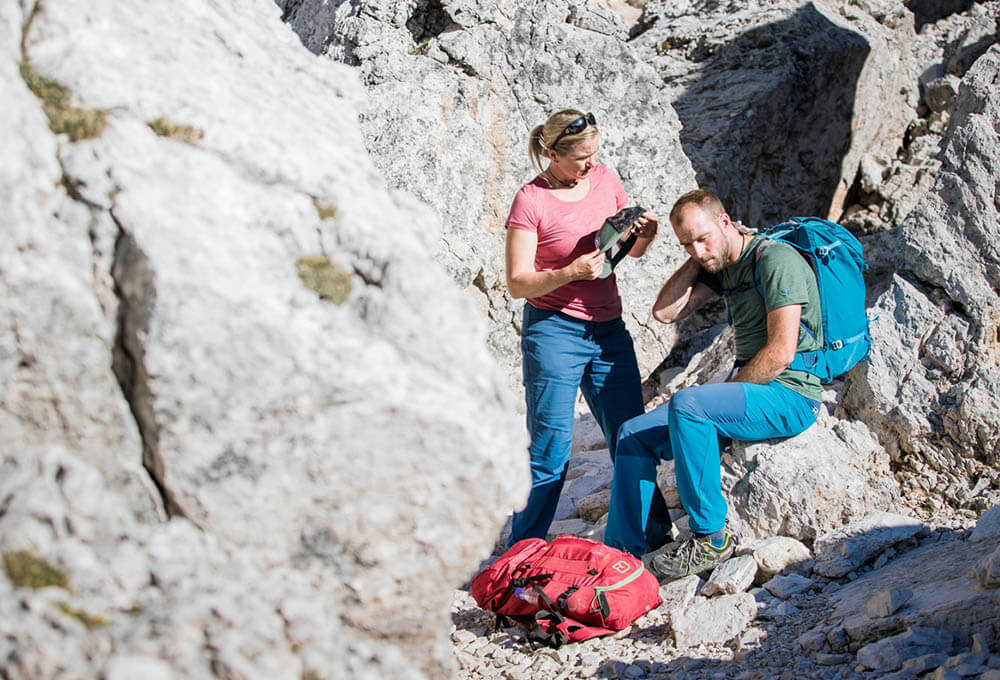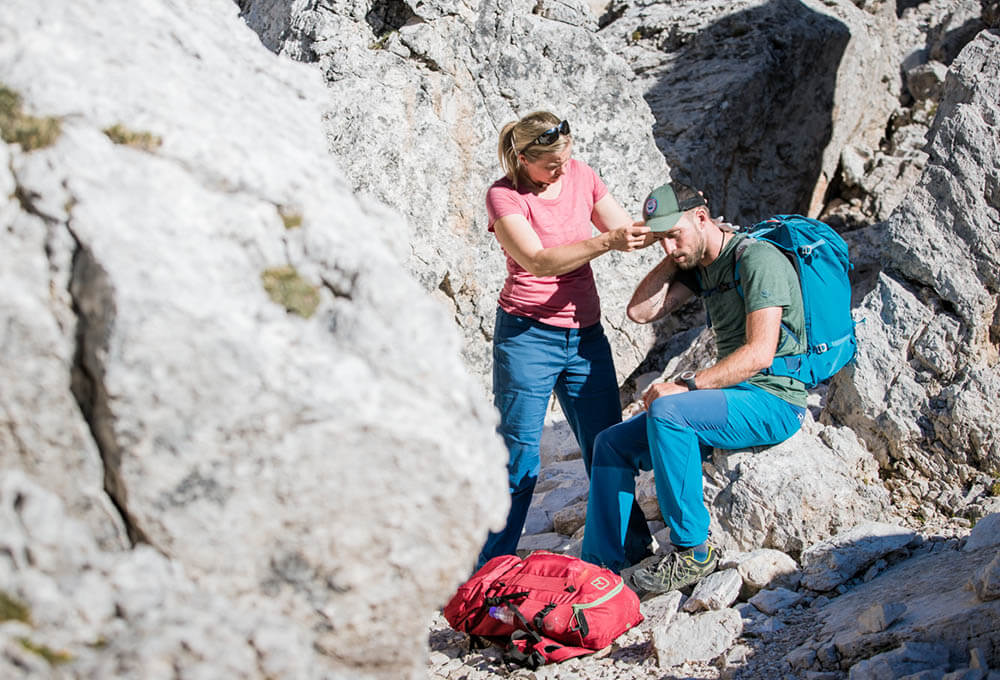Sunstroke
Sunstroke can become a life-threatening situation very quickly. It is therefore vital to ensure adequate sun protection for the head and neck. A helmet generally provides protection when climbing, so sunstroke is relatively rare during the climb itself. However, care is required on long approaches or descents which can expose climbers to the full heat of the sun.
Typical symptoms for sunstroke include a hot head, bright red face, headaches, dizziness, possibly uncomfortable muscle spasms in the neck, nausea, vomiting and even loss of consciousness.

The ill person will benefit from rest, shade and a chance to cool off. Do not simply pour water over the head; instead you should place a cool glove (e.g. filled with water) or similar cold compress on the back of the neck.

If the ill person has no head covering, give them a hat or something similar.

Depending on how painful the sunstroke is and whether the person is able to continue, you should make a joint decision on the feasibility of a rappel or descent or the need for a professional rescue team. If you have to wait, ensure the person remains in the shade, with the upper body in an elevated position, and is provided with adequate warmth and reassurance.


